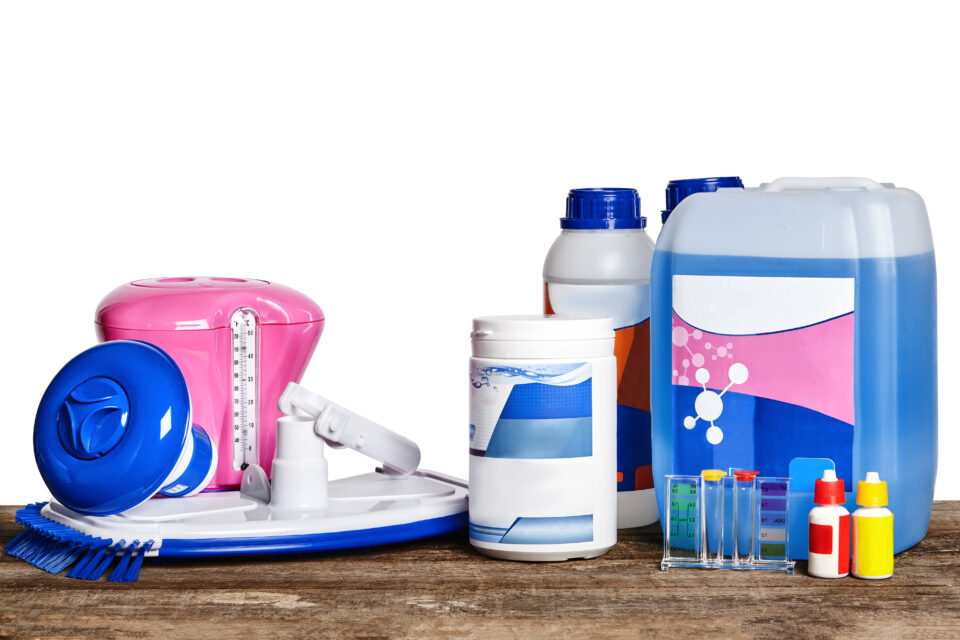Swimming pools have long provided entertainment, relaxation, and enjoyment to people of all ages. Whether it is in your yard, a community center, or an expensive resort, a well-kept swimming pool offers a cool respite from the oppressive heat and a site for leisure activities. Furthermore, to keep the water safe, hygienic, and free of contaminants and dangerous pathogens, however, intricate chemistry works in the background. This intricate equilibrium is the consequence of the careful and methodical usage of several swimming pool chemicals.
For pool owners, staff, and even swimmers themselves, understanding the function of these swimming pool chemicals is crucial. People can maintain a fun and secure pool environment for everyone by learning about the many chemicals used and their distinct roles. In addition, this thorough guide will cover the most popular swimming pool chemicals, their uses, and how to manage them skillfully for the best pool conditions.
Several swimming pool chemicals must be used to keep the water in the pool pure, sanitary, and safe. Here are some typical pool chemicals along with an explanation of why they are used.
Table of Contents
Chlorine
Chlorine, the most widely used and effective chemical for disinfection, is the cornerstone of clean swimming pools. It is essential to maintaining a clean and safe swimming environment because of its ability to eliminate bacteria, viruses, and algae. Due to chlorine’s adaptive availability in a range of forms, including liquid, granules, pills, and sticks, pool owners have a variety of options for adding chlorine to their pools.
The primary function of chlorine is to eliminate bacteria that may harm swimmers’ health and cause them to become ill. Hypochlorous acid (HOCl) and hypochlorite ions (OCl-) are created when chlorine is added to swimming pool water.
These chemicals are effective in killing infections by piercing their cell membranes and interfering with how they function. Chlorine efficiently destroys harmful bacteria, viruses, and other germs to make the pool water swimmable.
Owners of swimming pools have a variety of alternatives for maintaining recommended chlorine levels. The most popular method is to make the pool’s water chlorine-rich. Pour liquid chlorine into the pool or put chlorine straight into the water in the form of grains, pills, or sticks to do this. Instead, pool owners can employ automatic chlorinators or feeders to provide a consistent and adequate concentration by delivering chlorine into the water at a regulated pace.
The first stage in maintaining a sufficient chlorine balance is reaching the right concentration. Chlorine concentrations can alter as a result of evaporation, sunshine exposure, and bather load, among other factors. So frequent chlorine level monitoring is necessary to ensure effective disinfection. To determine chlorine levels, pool operators might utilize test kits or electronic meters.
Chemical Adjusters for pH
The pH level of the pool water impacts the comfort of swimmers. And the efficiency of additional chemicals. pH adjusters are employed to raise or lower the pH level. Muriatic acid or sodium bisulfate is utilized to decrease pH, while sodium carbonate is used to increase pH.
Algaecides
The common problem of swimming pool algae growth may quickly turn the water murky, slimy, and uninviting. Algaecides step in to help with this issue. To maintain clear, sanitary, and aesthetically pleasing pool water while treating algae infestations, people use specifically prepared chemicals known as algaecides.
Algaecides disrupt the life cycle of algae to stop them from growing and reproducing. Since these chemicals are available in liquid and granular forms, owners may choose the one that best meets their needs. Once added to the water, algaecides spread throughout the entire pool, effectively locating and eliminating algae at the cellular level.
There are several types of algaecides, each with a unique formulation and mode of action. Some algaecides work by getting into the algal cells and interfering with their metabolic processes, which kills the algae. Others apply a barrier to the pool’s surface to prevent algae spores from adhering and growing. Understanding the unique qualities and usage instructions of the chosen algaecide is crucial to ensuring its maximum efficacy.
Shock Therapy
For the purpose of removing organic pollutants and restoring water clarity, shock treatment involves adding a significant amount of chlorine to the pool water. Shock treatments come in various potencies and formats, including calcium hypochlorite and sodium hypochlorite.
Cyanuric Acid
People use cyanuric acid, either in the form of granules or liquid, to treat the water in the pool and stabilize chlorine in pools. This helps prevent the breakdown of chlorine caused by exposure to sunlight.
Hardness-Increasing Calcium
For the equipment and surface integrity to endure, the calcium hardness levels in a swimming pool must be kept at the proper levels. Furthermore, calcium hardness refers to the number of dissolved calcium ions in the pool’s water. The water may turn corrosive and damage pool surfaces if the calcium hardness level is low. High calcium hardness levels, however, can cause the buildup of scale, which can obstruct filters, pipes, and other gear.
Pool owners can use increases in calcium hardness to address low calcium hardness levels. The most popular calcium hardness enhancer is calcium chloride, which is available in granular or liquid form. Since water rapidly and easily dissolves calcium chloride, it allows for fast and readily changing calcium hardness levels.
Flocculants
People utilize chemicals known as flocculants to help clear translucent water of microscopic particles and suspended debris. Moreover, they make it simpler to filter their discharge by inducing these particles to coalesce. After introducing flocculants to the water, people commonly vacuum the pool or run the filtration system in “waste” mode to remove the collected particles.
Key Takeaway
It is critical for individuals to be mindful that the usage of chemicals depends on the type of pool, its size, and instructions. Additionally, to maintain the proper chemical balance, experts advise testing the water and carefully reading and following of the directions provided with each chemical. To further protect personal safety, always handle and store pool chemicals by safety regulations.

